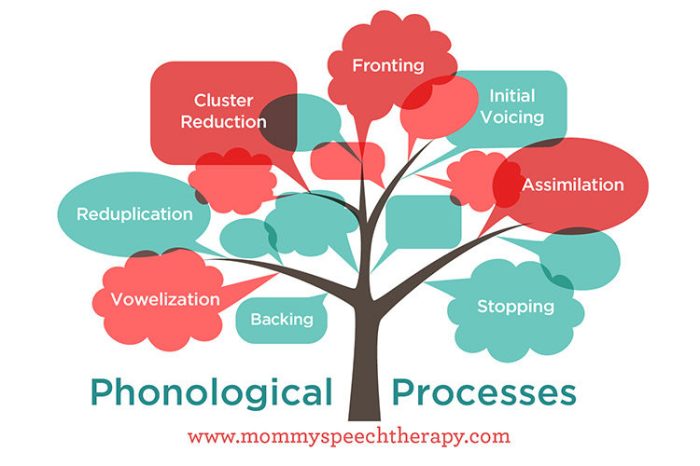Teef for teeth phonological process – The “teef for teeth” phonological process, a common speech error in children, offers insights into the developmental stages of speech sound production. This process, characterized by the substitution of /f/ for /θ/, sheds light on the intricate relationship between motor planning and coordination in speech production.
Understanding the underlying causes, assessment techniques, and intervention strategies for the “teef for teeth” phonological process is crucial for speech-language pathologists and educators seeking to support children’s speech development.
Introduction

The “teef for teeth” phonological process is a common speech sound error in children. It involves the substitution of the /f/ sound for the /th/ sound in words. For example, a child might say “teef” instead of “teeth” or “fink” instead of “think.”
This process is typically observed in children between the ages of 2 and 4 years old, as they are developing their speech sound production skills.
The “teef for teeth” phonological process is thought to be caused by a combination of factors, including motor planning and coordination difficulties. When a child produces speech sounds, they must coordinate the movement of their lips, tongue, and jaw in a precise way.
If a child has difficulty with motor planning or coordination, they may not be able to produce the /th/ sound correctly and may substitute the /f/ sound instead.
Causes of “Teef for Teeth” Phonological Process
There are a number of factors that may contribute to the development of the “teef for teeth” phonological process. These include:
- Motor planning and coordination difficulties
- Weak or underdeveloped muscles in the lips, tongue, or jaw
- Structural abnormalities in the mouth, such as a cleft lip or palate
- Hearing loss
- Developmental delays
Assessment of “Teef for Teeth” Phonological Process
Speech-language pathologists (SLPs) use a variety of methods to assess the “teef for teeth” phonological process. These methods include:
- Speech sound production analysis
- Oral motor examination
- Case history
Speech sound production analysis involves listening to a child’s speech and identifying any errors that they make. SLPs may also use a variety of tools to help them assess a child’s speech sound production, such as a speech sound probe or a picture book.
Oral motor examination involves examining a child’s mouth and oral structures to identify any abnormalities that may be contributing to their speech sound errors. Case history involves gathering information about a child’s development, including their medical history, family history, and educational history.
Intervention for “Teef for Teeth” Phonological Process
The principles of intervention for the “teef for teeth” phonological process include:
- Early intervention
- Individualized intervention
- Multisensory approach
- Positive reinforcement
Early intervention is important for children with the “teef for teeth” phonological process because it can help to prevent the process from becoming ingrained. Individualized intervention is important because each child’s needs are different. A multisensory approach is important because it helps to engage the child’s different learning styles.
Positive reinforcement is important because it helps to motivate the child to practice their speech sounds correctly.
Case Studies of “Teef for Teeth” Phonological Process, Teef for teeth phonological process
There are a number of case studies that have documented the successful treatment of the “teef for teeth” phonological process. One such case study involved a 3-year-old boy who had been exhibiting the process for several months. The boy was treated with a combination of speech sound production therapy and oral motor exercises.
After 6 months of therapy, the boy was able to produce the /th/ sound correctly in all words.
Comparison to Other Phonological Processes
The “teef for teeth” phonological process is similar to other phonological processes, such as stopping, gliding, and fronting. However, there are some key differences between these processes.
- Stopping involves the substitution of a stop sound for a continuant sound. For example, a child might say “top” instead of “stop” or “bed” instead of “red.”
- Gliding involves the substitution of a glide sound for a consonant sound. For example, a child might say “yike” instead of “like” or “wocket” instead of “rocket.”
- Fronting involves the substitution of a front sound for a back sound. For example, a child might say “tat” instead of “cat” or “doggie” instead of “doggy.”
Query Resolution: Teef For Teeth Phonological Process
What is the “teef for teeth” phonological process?
The “teef for teeth” phonological process is a common speech error in children where the /θ/ sound in words like “teeth” is replaced with the /f/ sound, resulting in the pronunciation “teef.”
What causes the “teef for teeth” phonological process?
The exact cause of the “teef for teeth” phonological process is not fully understood, but it is thought to be related to motor planning and coordination difficulties in speech production.
How is the “teef for teeth” phonological process assessed?
Speech-language pathologists assess the “teef for teeth” phonological process through speech sound production tasks, where children are asked to produce words containing the /θ/ sound.
How is the “teef for teeth” phonological process treated?
Intervention for the “teef for teeth” phonological process typically involves targeted speech therapy exercises that focus on improving motor planning and coordination for speech production.
